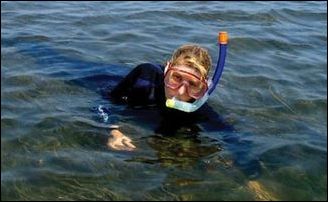In December 2008, Governor Tim Kaine’s climate change commission issued a detailed action plan. In 2009, Bob McDonnell was elected governor, and work on anything remotely connected to climate change promptly ended. In January 2014 Governor Terry McAuliffe took office, and he set up a new commission to review and update the Kaine plan. What can we expect from this latest initiative?
Judging from the proceedings of a meeting of the Climate Change and Resiliency Update Commission yesterday at the University of Richmond, nothing breathtaking is likely to emerge from this group. Part of the reason is that the Obama administration’s proposed Clean Power Plan, which would radically restructure Virginia’s electric power industry for the purpose of reducing carbon-dioxide emissions, is so massive that everything else seems small by comparison.
But the other reason for expecting only tweaks to existing policy is that McAuliffe set politically realistic goals. McAuliffe understands that multimillion-dollar spending or regulatory initiatives to combat climate change will be still-born in the Republican dominated General Assembly. So, he has charged the Commission to develop recommendations that can be implemented either through executive action or in partnership with private groups. And it’s quickly becoming obvious that only so much can be accomplished this way.
The small-bore nature of the proposals under discussion became evident from preliminary reports of working-group chairs. The education/outreach work group, for instance, suggested building a website to function as a authoritative clearinghouse for Virginia-related climate change and resilience information. Of course, that can happen only if resources can be found within an already over-stretched state workforce to build and curate it. Another work group is trying to identify data sources on everything from sea-level rise to the carbon sequestration capacity of Virginia forests for use in intelligent decision making. It’s not clear yet how much of this data even exists.
The public-funding work group seeks ways to leverage limited public funds with private dollars. “We don’t have a printing press here in Virginia,” quipped Walton Shepherd with the NRDC. His group is looking for opportunities to create public-private partnerships, to create “resiliency bonds” for infrastructure-hardening improvements, or to find a clever way that the up-front cost of flood-proofing improvements, such as elevating houses, can be paid for through lower flood insurance rates. This group is thinking creatively, but it’s not clear whether it can come up with anything tangible.
The energy work group is wrestling with some of the biggest issues, like how to promote cogeneration (which utilizes waste heat) and microgrids (which better accommodate small-scale renewable energy sources). Not only would such recommendations likely require General Assembly action, however, it may be difficult to obtain consensus within the work group. As an example of the potential friction within the commission, an individual representing Virginia’s electric co-ops questioned the blithe assertion of another commission member that a warming climate will increase the frequency and severity of storms. Contrary to predictions, the incidence of hurricanes along the U.S. Atlantic coast actually has declined in recent years.
More to the point, it is difficult to see how a commission that meets episodically over one year can master an incredibly complex suite of issues and develop solutions that meet McAuliffe’s political criteria. As Jagadish Shukla, with the Institute of Global Environment and Society at George Mason University, said at one point, the commission needs more time. “Two hour meetings don’t do justice to these problems.”
— JAB





